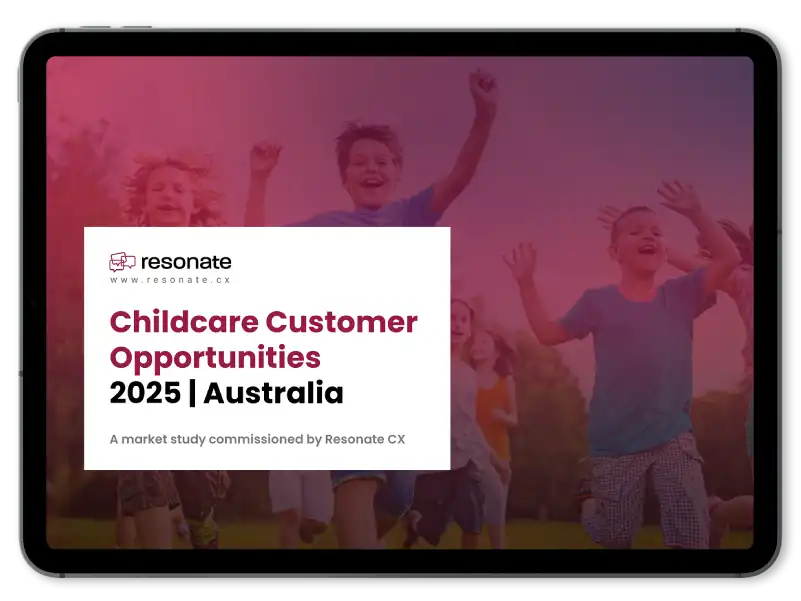I have a Voice of Customer (VoC) program, how do I get actionable insights?
Over recent years, it has become increasingly evident that the experience a customer has with a brand, is as important as the products themselves. A recent study by KPMG found accessibility to smartphones and the internet has changed the way customers perceive brands and make purchase decisions. Thanks to the easy availability of millions of customer experience reviews, consumers are demanding more engaging and unique customer experiences.
The availability of customer reviews continues to fuel demand for enriched customer experiences, businesses across the globe are designing customer experiences to capitalise on this mega-trend. Leading businesses are investing in technologies that not only listen to their customers but also create a two-way channel for holding a meaningful dialogue with them. This allows businesses to quickly address customer concerns and recover a bad experience while building customers’ loyalty.
However, many businesses often struggle to make actionable the data they collect through their Voice of Customer programs. Some find it difficult to meaningfully tie it back to their core businesses levers and drivers to make changes.
Below we have listed a few best practices that can be adopted to make the customer feedback more actionable. These will help drive actionable change and measurable insights from your voice of customer (VoC) program.
1. Set a clear direction and plot your course
Many organizations are excited to get their VoC programs started. However, it can often be difficult to capitalise on its benefits if goals are not defined. Not having clearly defined goals and measurable outcomes often lead to the VoC program not adding the desired value.
Resonate Pro Tips
- Set your 6 weeks, 3 month, 6 months and 12 month goals. E.g. 6 Weeks – Launch Feedback program; 3 months – Prepare first strategic insights reports with actionables ; 6 months – Get frontline involved and actioning.
- If it’s the first-time commission a pilot customer feedback program – this will allow all stakeholder to get a first-hand feel for the insights and how they can be used in their respective business areas. They can then be part of the roll out plan.
- Share goals with various levels in the organisation – CX is a team sport
2. Make sure you are using the right measure
We all know how driving with the wrong pair of prescription glasses can be dangerous. Therefore, once the goals and strategy for your VoC program are set, the organisation must make sure it selects the right CX metrics to measure and track. CX metrics like, Net Promoter Score (NPS), Customer Satisfaction (CSAT), Customer Effort Score (CES), are all insightful, but each metric measures a unique and distinct aspect of a customer’s interaction with the organisation. To know more about these metrics, read our guide on CX metrics.
Resonate Pro Tip
Customer advocacy (NPS) and customer satisfaction (CSAT) are unrivalled catalysts. Measuring both these metrics through your VoC program can provide a detailed account of the customer’s experience with the organisation. Measuring customer advocacy can help predict revenue/sales growth as NPS helps gauge your existing customers’ likeliness to recommend your organisation. Measuring customer satisfaction (CSAT) on the other hand assists in assessing whether your customers are happy with your products and operational policies and procedures.
3. Know how your customers feel
Now that we are measuring the right thing, it is important we have an understanding of why these customers gave the ratings. It is essential to ask customers: “why did you give this score?”. This will allow you to understand and identify what pain points were behind the customer’s negative rating. Or what attributes of the experience led to a positive rating. Additionally, calling back the customers to further discuss their experiences provides opportunities to uncover insights that customers might have deemed too verbose or not worthwhile to type. By taking a census of the pain points and the positive attributes observed through these channels, an organisation gets the qualitative data needed to formulate proactive CX initiatives.
Resonate Pro Tip
A quick way to enhance the effectiveness of call-backs is by addressing the context they have provided and thanking them for their feedback. Addressing a customer’s feedback during a call-back indicates to them that their concerns are acknowledged and valued, which can in turn increase their association to the organisation or brand. Amongst our clients we have seen call-backs to be highly effective in overturning negative experiences. For instance, context gained from the feedback verbatim has helped frontline staff reach out to customers to acknowledge their feedback, invite them for another experience and drive customer loyalty even further.
4. Know what drives a customer’s experience
Being able to obtain feedback on customer perception regarding key elements of the business can vastly increase the actionability of any insights gained from your VoC program. Asking customers’ questions related to the organisation’s key value propositions e.g Value, Product Range, Easy Delivery can help tactically tune operations to better drive customer experience outcomes. One easy way to achieve this is by incorporating CX Driver Questions directly into the VoC Program. These CX Driver questions are meant to probe customers and shed additional light what driver or value propositions we are scoring well on.
5. Celebrate your customer’s experience and feedback
It is human nature to react positively to appreciation and gratification. Feeling that your contributions are valued and appreciated by a business can foster a sense of belonging and loyalty. Unaddressed customer feedback can slowly decrease response numbers or reduce the quality of feedback, thus significantly reducing the quality of data you gather. To avoid such a situation, it is highly rewarding to celebrate and appreciate your customers who provide feedback and let them know they are being heard.
Resonate Pro Tip.
Arranging a customer appreciation forum on a recurring frequency can be a good way to thank your engaged customers. General announcements and a personal thank you email to customers after their concerns have been rectified can help boost customer engagement and encourage them to provide more feedback in the future. Getting frontline teams to call customer back is another way to connect.
Summing it up, to make sure the VoC program keeps churning out actionable insights, it is crucial for organizations to maintain the two feedback loops. The inner loop which involves making sure customer feedback is successfully converted into a actions at the frontline operational level. And the outer loop which involves looking that broader customer experience insights that help inform strategic and operational change initiative to meet organisational goals.
To find out how Resonate helps its customers solve such challenges, please read our customer success case studies.









